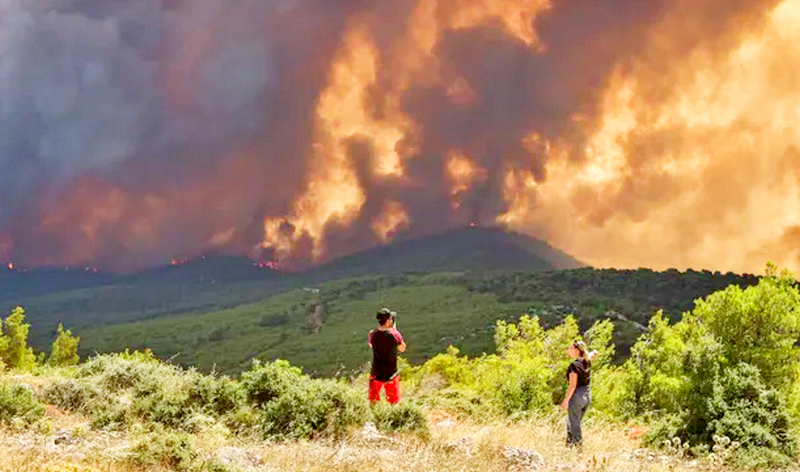How deadly are these heat waves – and how hot will they get?

By The Guardian - Ajit Niranjan, Harvey Symons and Antonio Voce. Sat 22 Jul 2023 08.00 BST
As record-breaking temperatures hit the planet, stresses on the body include heatstroke and heart, kidney, and lung disease.
Heat is a silent killer. When it gets too hot, the heart pumps faster, blood races, and organs begin to fail. The stress overwhelms the body as it struggles to cool itself down. Internal temperatures rise from regular (37C) through feverish (38C) to deadly (40C).
Many people who spend most of their time outside, such as farmers, builders, and the homeless, die outright from heatstroke. But far more lives are claimed by heart, lung, and kidney diseases made worse in hot weather. Research pegs the death toll from the heat in Europe last summer at 61,672 people – more than a jumbo jet crashing out of the sky every day.
Am I safe if I stay inside during the day?
Record-breaking temperatures in the day grab the most attention. But relentless hot nights are when much of the damage is done. The body can’t cool down, dragging out the time its organs spend under stress, and people struggle to sleep, cutting into crucial recovery time.
Hot nights and bad sleep are uncomfortable for all but deadly for some. Studies show the sleep deprivation inflicted by hot weather hits older people and women hardest – the same people who die at the highest rates during heatwaves – and hot nights are associated with high mortality from heat.
Are the current heatwaves across Europe and the US related to climate breakdown?
By burning fossil fuels and destroying nature, humans have heated the planet by 1.2C above pre-industrial levels. That has raised average temperatures across almost all the land on the planet and made heatwaves hotter and more likely.
Temperatures have always varied naturally. But raising the average means random spikes now jump around a higher baseline than they did in the past. In Europe, which has warmed by nearly twice the global average, this means less extreme cold but more extreme heat.
Some studies suggest that the jet stream, a current of fast-moving air that dictates weather patterns in Europe and North America, has grown wobblier as the planet has warmed. Bends in the jet stream have trapped hot air in domes over parts of the US and Europe, dragging out the time that people bake in extreme heat. Scientists warn it is too early to say if climate change is making this worse.
How hot will it get in the future?
In the 1980s, when the planet was 0.5C hotter than before the Industrial Revolution, Europe experienced five to seven days of heatwaves each year. This number has already more than doubled as the world has warmed beyond 1C.
If the planet heats by 2C, the average number of heatwave days will rise threefold in northern Europe and sixfold in southern Europe. A scorching heatwave that used to hit once a century will strike every five years in northern Europe and every other year in southern Europe.
World leaders signed an agreement in 2015 to try to limit global heating to 1.5C by the end of the century. Their current policies are set to heat the planet by 2.7C.
